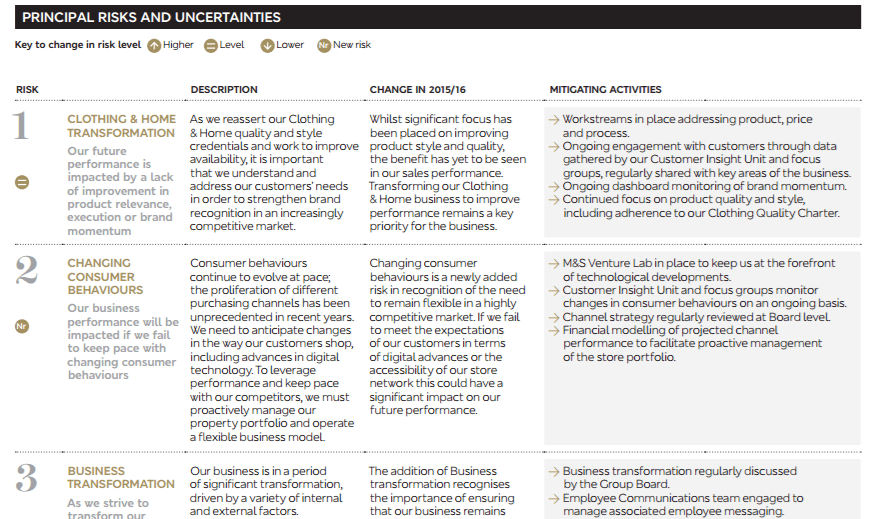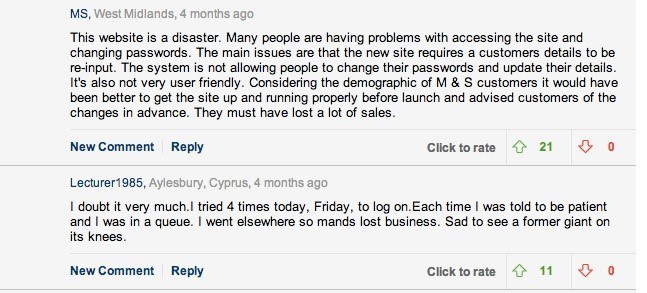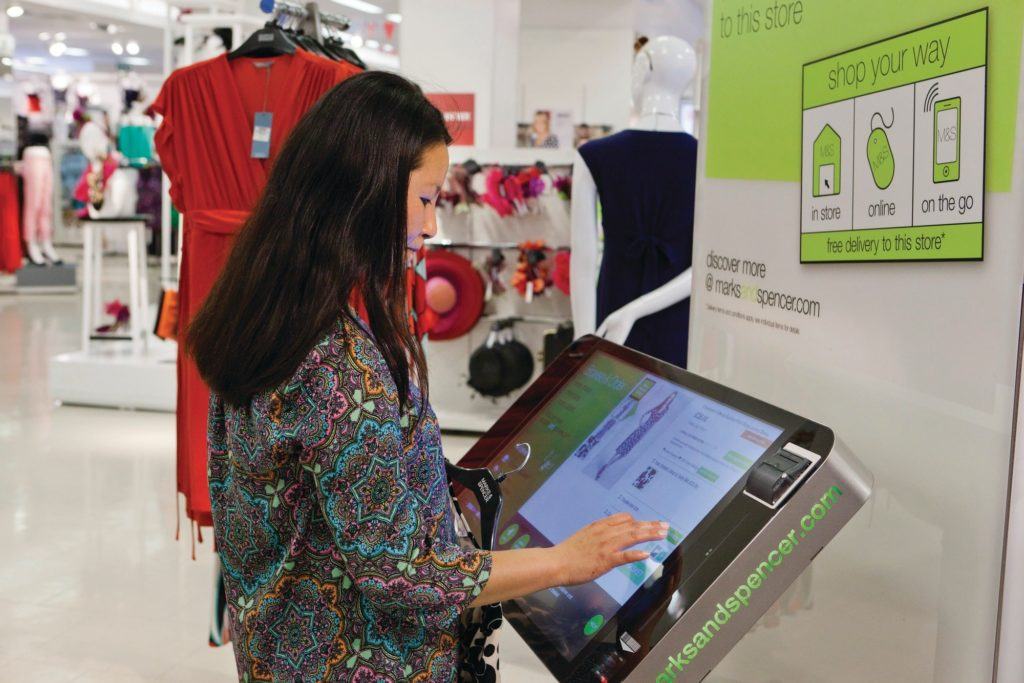Marks & Spencer: Innovating an old fogey

Can the 130-year-old retailer continue to give us ‘magic and sparkle’ in an increasingly digital world?
Exhibit 1: M&S’s Christmas advert arguably ‘won’ the Christmas advert game this year, but retail sales continue to slump as it rises to the challenge of an increasingly digital customer.
Marks & Spencer (M&S) has a core presence on the UK highstreet: every Brit will tell you that it is the go-to place for socks, tights and underwear. While M&S has remained steadfast as a quintessentially British, traditional, brick-and-mortar store, the UK retail landscape around it has evolved rapidly. Newer fast fashion entrants increasingly dominate the market, enrapturing younger generations, while M&S clothing has struggled to define a target customer and keep up with appropriate trends. This competitive threat has been compounded by M&S’s slow response to the change in customer behaviour from in-store to online. Slap on legacy supply chain issues, and the combined effect is a multi-year sales decline in their clothing and home business, with same-store sales down 8.9% in Q1 earlier this year, worse than bearish analyst predictions (Exhibit 2) [1].
Exhibit 2: Continued and deepening decline in M&S sales [1]
The retail group recognises the importance of digital in the turnaround of its clothing business, listing this as a top risk to future performance (Exhibit 3) [2]. Britons are the biggest buyers of clothes online in Europe [3], and increasingly expect retailers to deliver on the unspoken customer promise of a seamless omni-channel buying experience. A shopper may see a product in the shop window, browse it on a phone, make the purchase on a laptop, and pick up the product in-store. So what has M&S done to address this? Enter M&S Venture Lab.
Exhibit 3: Adapting to changing consumer behaviour is listed as a top risk to future performance [2]
M&S Venture Lab – “the need to evolve”
M&S’ digital retail presence has had a tumultuous history. Until relatively recently, M&S.com was not even owned by M&S – it was run by Amazon. Then CEO Marc Bolland recognised that this was like “driving a rent-a-car…If you want to win in the game, you never do it with a rent-a-car”. With a £150M investment, the website was migrated, redesigned and relaunched on an M&S-owned platform (February 2014), imperative in positioning the retailer for the future [4]. The new website encountered significant teething problems – confusing customers with its requirement for existing customers to re-register and technological glitches making it difficult to find products, and delivering orders to incorrect addresses. This received significant media attention and caused an avalanche of customer complaints (Exhibit 4).
Exhibit 4: Frustrated customers vent on www.thisismoney.co.uk [5]
Learning from past mistakes of delaying investment in technology in the face of changing consumer behaviour, M&S established a new unit: M&S Venture Lab. This creative digital division uses lean start-up techniques to experiment ways to improve the customer shopping experience, exploring how they might shop in 5-10 years’ time. Ideas extend to “a post-PageRank world where every home has an AI-based assistant, or what garments we’ll be wearing post-cotton (and how we might print them)”. This internal experimentation, testing and scaling ideas with small budgets of thousands, is geared to internally building digital capabilities and products that they would otherwise expect to acquire later for millions to catch up with competition [6].
An example project is TryTuesday.com, an online personal stylist (Exhibit 5). After a few initial questions, the user is introduced to their personal stylist who handpicks M&S outfits/items to solve the wardrobe problems the user is facing – tailored to their lifestyle, body shape, budget, and aspired look. The user is free to buy what they like and provide feedback on what they don’t, the latter enables the stylist to understand their taste [7].
Exhibit 5: ‘Tuesday’ is an online personal stylist service; users upload a photo, answer questions in a one-on-one chat and can call their personal stylist to discuss their fashion needs [7]
The virtual stylist addresses the greatest challenge retailers face: technology has replaced much of the human relationship between store and customer. Through Tuesday, M&S can personalise the user’s online experience, and regains the luxury of talking directly to an online shopper.
Looking ahead: Stores still matter
As the rate of digital sales increases, retailers are faced with the dilemma of what to do with their physical stores. The easiest solution to help their bottom line is accelerating store closures. M&S appear to be doing this, with 60 planned branch closures by 2021 [8]. This can be short-sighted, as it diminishes their catchment area and reduces scale benefits. Looking ahead, the role of the store will still matter, as few categories will reach 100% online penetration, and shopping will continue to be a social and tactile experience [9].
Instead, M&S should focus on innovating their in-store experience. Their ‘browse & buy’ in-store kiosks are a step in the right direction (Exhibit 6). These enable customers to scan bar-codes on items and order these in their size during stock-outs, or view and purchase items on M&S.com which are not available on display [10].
Exhibit 6: ‘Browse & order’ in-store kiosks were trialled in the Cheshire Oaks outlet store before nation-wide rollout (see here for a video demo) [11]
They can however, take this one step further with features such as interactive digital displays/storefronts, touchscreens, magic mirrors or virtual dressing rooms, learning from industry leaders. Rebecca Minkoff, for example, are years ahead in their use of data and technology (Exhibit 7) [12].
Exhibit 7: Rebecca Minkoff’s flagship store in New York City demonstrates cutting edge use of technology in a brick-and-mortar store
M&S may have started off on the back foot, but it’s never too late to teach an old dog new tricks.
Word count: 799 words
References:
- Paul Jarvis, “Marks & Spencer Sales Slump Worsens, Adding to CEO Challenge”,Bloomberg,July 7, 2016, http://www.bloomberg.com/news/articles/2016-07-07/marks-spencer-sales-slump-worsens-to-add-to-rowe-s-challenge, accessed November 17, 2016
- M&S Est. 1884 Annual Report and Financial Statements 2016. London, UK, Marks & Spencer, 2016.
- “E-commerce in the United Kingdom – Statistics & Facts”, https://www.statista.com/topics/2333/e-commerce-in-the-united-kingdom/ , accessed November 17, 2016
- Andrea Felsted, “M&S suffers setback from online glitches”, Financial Times, May 20, 2014, https://www.ft.com/content/6acb1348-e030-11e3-9534-00144feabdc0, accessed November 17, 2016
- Manuel da Costa, “What went wrong with the Marks & Spencer website redesign that made them lose sales?”, http://www.digital-tonic.co.uk/digital-tonic-blog/went-wrong-marks-spencer-website-redesign-made-lose-sales/, accessed November 17, 2016
- “What we do in the M&S Venture Lab”, https://medium.com/m-s-venture-lab/what-we-do-in-the-m-s-venture-lab-bef7c8d85078#.vm3ijkm9o, accessed November 17, 2016
- Erica, “The secret high street styling service you need to know”, The-Edited, September 25, 2016, http://the-edited.com/2015/09/25/the-secret-high-street-styling-service-you-need-to-know/, accessed November 17, 2016
- Dan Macadam, “M&S to close clothing and home stores in turnaround plan”, BBC News, November 8, 2016, http://www.bbc.com/news/business-37906466, accessed November 17, 2016
- Erika Serow, “Why Stores Still Matter in an Online World”, Bain & Company Insights – Bain Video, June 17, 2015, http://www.bain.com/publications/articles/erika-serow-why-stores-still-matter-video.aspx, accessed November 17, 2016
- Ben Davis, “11 ways M&S is improving the multichannel experience”, Econsultancy, February 21, 2014, https://econsultancy.com/blog/64379-11-ways-m-s-is-improving-the-multichannel-experience/, accessed November 17, 2016
- Kate Doherty, “Analysis: How to leverage the subliminal power of music in store”, Retail Week, February 8, 2016, https://www.retail-week.com/topics/customer/analysis-how-to-leverage-the-subliminal-power-of-music-in-store/7004508.article, accessed November 17, 2016
- Trips Reddy, “Revolutionize Online & Offline Shopping Experiences”, UMBEL, May 18, 2015, https://www.umbel.com/blog/retail/13-retail-companies-already-using-data-revolutionize-shopping-experiences/, accessed November 17, 2016








Thanks for the interesting read! Unlike its pure-play retail clothing counterparts, M&S also sells home products and luxury food products, and all three product categories usually co-exist in the same store. This puts M&S in a unique position when coming up with their in-store innovations for their clothing section, as they would have to consider these innovations in tandem with the implications on their food hall.
Another hallmark of M&S stores are that they are usually quite big, with clearly demarcated clothing, home products, and food sections, and enabling different customer experiences within each section. Given that M&S has 60 planned branch closures in the next 5 years, I am sure they must be considering reducing the size of the remaining stores as well. This makes it even more important for innovations to consider all product categories – I am not sure if customers would fancy browsing a digital catalog of the latest fashion clothing right next to the fridge of frozen chicken.
As shown in the data provided in the article, looks like M&S is in a position where it is fighting for survival. M&S, just as many other retail stores are now struggling in the fight against online retailers and they are trying to play catch-up.
While most of our purchases will in fact now come from online pages, I believe that the need for a physical store will always be there. As mentioned in a video by Erika Serow: Why Stores Still Matter in an Online World, “shopping is a social experience, where customers like to interact with a sales person, touch and feel the product before buying. However, I do think that this will not be the case for every segment of the apparel retail business.
As you mentioned in your article, looks like M&S is where you go when you want to buy socks, tights and underwear. In this category, I do not see a need for a physical store, given that even now, we buy those products without the need to try them on. There is less differentiation in those products that the need to try them on is pretty useless.
One significant challenge to the whole digital experience inside the traditional retail store is that consumers will need to be educated to how to use these kiosks and it will require a huge amount of resources. It seems to me that the average customer will not want to spend his/her time trying to learn how this kiosk works instead of actually physical browsing the store. I also think that once a customer understands how the kiosk works, he/she will not longer see the need of actually going again to the store if he/she learns that he/she can actually do the same thing from the comfort of a computer at home.
While it’s certainly “better late than never” when it comes to digitization, I wonder if simply enhancing their online capabilities and in store shopping experience is going to be enough to fuel the turnaround M&S needs. From your article, it seems as if M&S has a slew of issues it needs to address: from identifying a target market, to having merchandise that resonates with consumers, to better executing its digitally sourced operations. It’s unclear to me if closing some storefronts and adding some kiosks and virtual stylists is going to be enough. Digital enhancements certainly provide opportunities for traditional brick and mortar retailers to better compete in today’s marketplace, but those enhancements need to be implemented in tandem with a strong existing business model, not just as an add on and afterthought.
I agree that brick and mortar is still hugely important in the shopping experience. However, the role of stores is evolving and I think that M&S needs to evolve its stores to be more integrated with its online presence. Many retailers are struggling with omnichannel, from the perspectives of both inventory and brand management. From my experience at Ann Taylor, I think that improving and integrating digital technology into the shopping experience will allow M&S to collect more data on its consumers and their shopping behaviors across all channels. When a retailer controls consumer experience across all channels, their ability to retain consumers and shift behavior increases. Given M&S’ declining performance, this move will hopefully put them back on track.